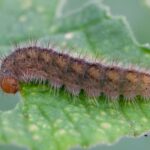Restoring The Duke of Burgundy To Yorkshire
The Duchy of Lancaster has been working with a local conservation group in Yorkshire to protect a rare species of butterfly for more than a decade. In the UK, the intricately marked Duke of Burgundy was traditionally found on the chalk downlands of Southern England. However, in 2011, a small number were found in woodland on the Duchy of Lancaster’s Pickering estate.
In response to the find, the Duchy agreed to the removal of newly planted deciduous trees in order to prevent the small colony becoming ‘shaded out’ as the trees grew. The original clearing was then enlarged and extended by the creation of a widened forestry ride and a Butterfly Conservation group began coppicing a nearby area of woodland also owned by the Duchy. We were delighted to discover five years ago that this site had also been colonised and the numbers on both the original ‘Plantation site’ and the newer ‘Coppice site’ have been gradually increasing ever since.
We have now introduced our own woodland stewardship scheme focused on driving biodiversity gain across each of the two sites. As part of this initiative, the local branch of the Butterfly Conservation group to identify suitable areas for new colonies and the Duchy will work with volunteers to create one hectare of new coppice clearings over a three-year period. We hope that this project will be successful in extending the number of occupied Duke of Burgundy sites and consolidate the recovery of the butterfly from extinction in the North Yorkshire Moors.
Commenting on the valuable work carried out to date, Robert Parks, Species Coordinator for Duke of Burgundy at the Yorkshire branch of Butterfly Conservation said: “We have been greatly encouraged by the growth in numbers of this species over recent years and applaud the efforts made by the Duchy team and local foresters to protect and enhance the natural habitat which allows this butterfly to flourish. We are extremely hopeful that numbers will now continue to increase and that the threat of extinction which was such a very real possibility 10 years ago is now over.”
The Duke of Burgundy – or hamearis lucina – is small with orange and brown markings, like a tiny fritillary. The undersides of its hind wings have rows of white spots and it lives in small colonies in grassland or woodland clearings. Eggs are laid in small batches underneath the leaves of Primrose (Primula vulgaris) and Cowslip (P. veris) plants. They take seven to 21 days to hatch and even after six weeks of feeding, the caterpillars remain smaller than 2cm long.


